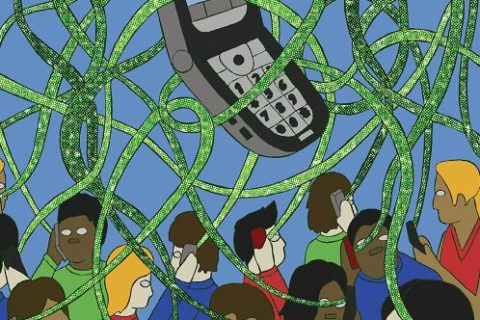Marco Bevolo
First published in Research World March 2009
Davide Quadrio, aka Dado, talks to Marco Bevolo about BizArt, the experimental art lab he set up in Shanghai to foster creativity and new ideas.
What was the objective of BizzArt and how did it develop?
My intentions were very simple when I started BizArt, an organisation which despite its name is not-for-profit. I wanted to develop a place for young artists to operate in a completely creative environment that was open to all kinds of experimentation. I also wanted to open it up to the international scene and to bring in ideas, images, content and professionalism unknown in Shanghai at that time. Believe it or not, Shanghai in 1998 did not have professional galleries or art institutions and museums were still in a sort of post-communist conceptual void, where video, installations and performances were not considered art and were mostly judged ‘subversive’.
How successful has this initiative been and what are your ambitions for the future?
Looking back at 10 years of work, I think that this experience has been successful on various levels. Firstly, it shows that commitment and long-term vision are the core to its success. Secondly, it demonstrates that it is possible to develop business models in the arts which are not assisted by governments or public money alone or based on a product-based economy of buying and selling. Thirdly, it demonstrates that collaborative intelligence is the only way to generate change, and finally, that generosity feeds a network of trust and efficient cooperation.
What I want to do next, which I am trying to achieve in cooperation with the Prince Claus Fund and my pan-Asian network, is to propose something that can create a new collaborative framework so that I can share the knowledge I have gained to build concrete support for enhancing the value of what I call ‘experimental creativity’.
Arthub (ww.arthubasia.org) is the expression of this scheme. One of the key challenges I want to explore is how to attract businesses to associate with and be challenged by alternative ways of producing ideas, and from that, works of art. We will look at how artistic and creative ideas can be placed at the core of company and business investment and how companies can translate these ideas into dynamic sources of inspiration to challenge the over-stimulated consumer market.
What are the challenges of setting up a new organisation in China and specifically in Shanghai?
Over the past decade, one of my key concerns in my work was the interaction between the international and local cultures. Bizart was born as a platform to create contemporary art in an environment where funding for contemporary art did not exist and there was a complete lack of interest by local and international institutions and the general public in contemporary art in its less conventional expressions.
Bizart used the local economy to support its activities in a not-for-profit way by re-investing money earned through design and services such as organising artistic and commercial events to support the creative process with both local and international artists. Bizart operated in the space between local government, which showed hostile or silent acceptance, and the local economy through private businesses and the international arena. Through this, I learned that many misunderstandings can arise because of the very superficial level of understanding between local and international players and because there are too many ‘exotic’ ideas coming from the West when relating to China.
Did any special issues arise in working in a context that is politically still largely influenced by a completely different cultural framework, namely Confucian thinking?
Operating inside a socio-political and cultural system as different as post-communist China requires study, understanding and sensibility to the other’s point of view. I have been immersed in this environment for over 15 years and speak and write Chinese, and am still very conscious of being different; one has a pervasive feeling of being an alien. Nonetheless, it is possible to find openings, to have a dialogue and to create trust. This approach, which requires a lot of patience, is not always smooth and is never simple, has positioned me as being someone who is integrated to a certain extent, respected as an insider and recognised as a person who knows how to survive in this changing society.
What kinds of issues arise when integrating your organisation into the more general Asian context, beyond just China?
Zhongyong, one of the Chinese classical books dating from the second or third centuries B.C. says, “Integrity is the way of Heaven, integrating is the way of man. The man who integrates is one who chooses the good and holds onto it firmly.”
After almost 16 years in China, moving my base from this country to another uncertain territory like Thailand, which is what I am doing, might seem crazy. However, I believe that my experiences in China and what China has offered me with its fast-changing and uncodified locus of experimentation, have given me a solid foundation to develop my skills on a more cross-cultural Pan Asian level.
As it is still not legally possible in China to have a not-for-profit organisation acting independently at a local and international level, I decided to create a legal structure in Hong Kong and to operate from there throughout Asia and worldwide. In this respect, Arthub is now a fully not-for-profit organisation which can submit projects for international public grants and facilitate tax incentives for patrons.
Working in Shanghai, how can one create a value proposition that is attractive globally?
One needs to think about how to develop activities that relate to branding, luxury and art in China, but also emerging markets in South Asia, and to do this seriously requires in-depth analysis of the market, buyers and public needs.
People are often seduced by Shanghai’s glamour and I have seen many people become bankrupt or burned out over the last 10 years. There is also a multitude of people who become China experts after just a few months of being in the country, some of whom don’t even speak Chinese, and this is another facet of the Far-East/Far-West interface represented by booming Shanghai.
How does one resolve the challenge of dealing with different cultures and sensibilities in China?
Opening a business in China is not easy. The best suggestion I can give is go slowly, take the time to learn about the market and what you want from it, and consider other possibilities. In this sense, I see a great potential in Southeast Asia. I speak four languages fluently. I am open to communication and am interested in any socio-cultural exchange. The fact that I find myself more involved in countries other than Italy has created the perfect framework to deal with other cultures, ways of working and thinking. This challenge is my idea of bliss.
Do you expect the economic downturn to impact this development?
Yes, I think that we need to reposition the role of creatives, ideas, challenges and the unconventional, and be open to hope and not fear. In this time of global financial crises, a process of re-examining the issues I mentioned can reposition art and business, communication and consumer markets, ideas and innovation.
Having conducted research projects for cultural and other purposes, how do you view the contribution of market research?
Market research has been a key income source over the last few years and is especially useful for policy makers and governments who need to listen and change. They tend to think about cultural exchange in a standard framework, whereas the way the Finnish government handles this, which is to hire an agency to do their communication and use culture as a communication tool, could be a better way forward. Professionals should be involved, rather than politicians who are satisfied by showing mediocre art and don’t have the vision or the skills to make an impact.
On the other hand, in consulting for creative businesses, I might sometimes have lacked the daring push to create something completely new in China. One can worry about going too far, or thinking that consumers will reject anything that is too extreme or that everything needs to be cheaper because we are in China. There is a difference between respecting another cultural environment and being paternalistic about it. I am in the preliminary stages of consulting a huge real estate company in Beijing and face similar issues. They want something fresh, extraordinary and different, but if the proposal is too different, they might not understand it, but then this is probably the destiny of the consultant.
Davide Quadrio managed BizArt Art Centre in Shanghai as the first not-for-profit independent creative lab in China. In 2007, he created Arthub (www.arthubasia.org) as a platform to support artistic endeavours in Asia and it is now one of the 12 worldwide network partners of the Prince Claus Fund for Southeast Asia. Quadrio has organised exhibitions, educational activities and exchanges in China and abroad and is working to strengthen cultural policy relationships between Europe and Asia.
Marco Bevolo is an independent author.


